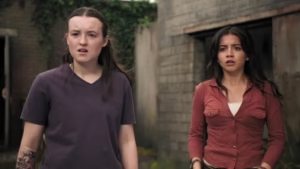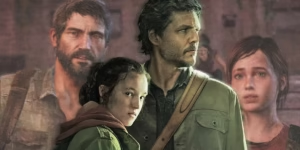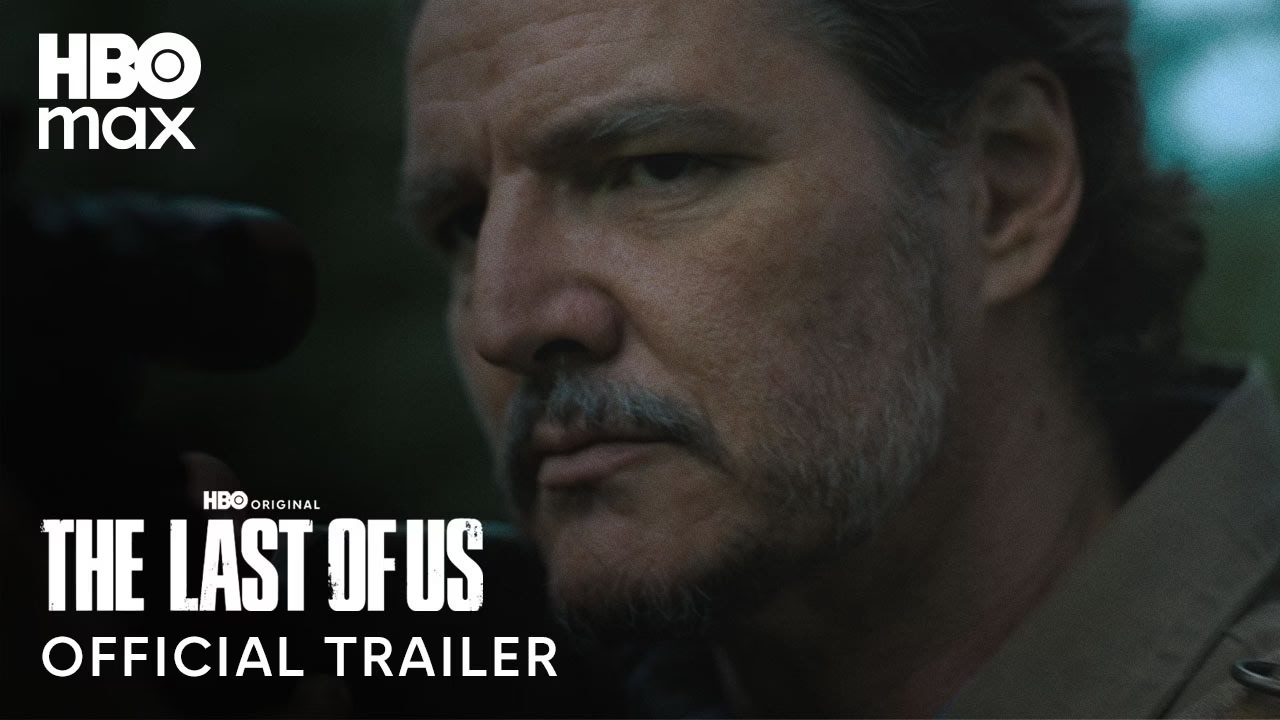More Than Survival: How The Last of Us Redefined Storytelling in Gaming and Television
In the vast, often-crowded landscape of post-apocalyptic fiction, few stories have resonated with the raw, emotional power of The Last of Us. It began as a video game, a 2013 masterpiece from developer Naughty Dog that transcended its medium to become a cultural touchstone. A decade later, its HBO adaptation achieved the near-impossible: it broke the “video game curse,” earning critical acclaim, captivating millions of new fans, and proving that a great story is powerful in any form.
But what is it about this grim journey across a ruined America that has captured our collective imagination so fiercely? The answer is more complex than simply “zombies.” The infected, while terrifying, are merely the catalyst. The true genius of The Last of Us lies not in the horror of its world, but in its profound, unflinching, and often brutal exploration of humanity. It is a story about love, loss, vengeance, and the terrifying moral compromises made in the name of survival. This is not just a story about the end of the world; it’s a story about what we do with what’s left.
This definitive guide will explore the entire phenomenon of The Last of Us, from the fungal plague that started it all to the complex characters who anchor its narrative, the thematic depth of its two-part game series, the triumph of its television adaptation, and the enduring legacy that continues to shape modern storytelling.

A Plague Born from Nature: The Cordyceps Brain Infection
The horror of The Last of Us is uniquely terrifying because it’s grounded in reality. The antagonist isn’t a supernatural virus or an alien entity; it’s an evolution of something that already exists: the Ophiocordyceps unilateralis fungus. In our world, this “zombie-ant fungus” infects insects, seizes control of their motor functions, and forces them to a high perch where the fungus can erupt and spread its spores to a wider area.
Naughty Dog’s creative team, led by Neil Druckmann and Bruce Straley, posed a chilling question: What if it mutated to infect humans?
The result is the Cordyceps Brain Infection (CBI), a plague that doesn’t just kill its host but transforms them into aggressive, mindless vessels for the fungus’s propagation. This scientific grounding makes the threat feel plausible and deeply unsettling. The infection progresses through several horrifyingly distinct stages, each presenting a different kind of threat:
- Runners (Stage 1): The recently infected. They are fast, travel in packs, and retain a sliver of their humanity, often heard weeping or twitching in pain. Their recognizable human form makes them tragic and disturbing to confront.
- Stalkers (Stage 2): After weeks or months, the fungus begins to grow out of the host’s body. Stalkers are cunning, hiding in dark, damp places and waiting to ambush their prey. They represent a terrifying fusion of human intelligence and fungal instinct.
- Clickers (Stage 3): After about a year, the fungal growth completely covers the host’s head, blinding them and forming a hard, chitinous plate. They navigate using a primitive form of echolocation, producing a signature, bone-chilling clicking sound. Their strength is immense, and their bite is instantly fatal. The Clicker is arguably the most iconic and feared enemy in the series.
- Bloaters & Shamblers (Stage 4): The oldest and rarest stage. Years of infection have turned the host into a lumbering tank, covered in thick fungal armor. Bloaters can rip survivors apart with their bare hands and throw sacks of mycotoxin spores. Shamblers, found in wet environments, release acidic spore clouds when they get close or upon death.
This detailed, biological life cycle creates a world where the environment itself is the enemy. Spores fill enclosed spaces, forcing survivors to use gas masks and turning every abandoned building into a potential tomb. The world of The Last of Us is not just empty; it is actively hostile, reclaimed by a force of nature that sees humanity as nothing more than a resource.
The Unlikely Pilgrims: Joel and Ellie

At the heart of this desolate world are two of the most complex and beloved characters in modern fiction: Joel Miller and Ellie Williams. Their relationship is the story’s anchor, its emotional core, and the engine that drives the entire narrative.
Joel Miller: The Survivor
When we first meet Joel, it’s on Outbreak Day, the day the world ended. He is a single father, a loving dad trying to make ends meet. Within minutes, we witness the foundational trauma of his life: the brutal, senseless death of his daughter, Sarah, at the hands of a soldier.
Twenty years later, the Joel we see is a different man. The warmth is gone, replaced by a hardened, cynical shell. He is a smuggler in the Boston Quarantine Zone (QZ), a brutal survivor who has done unspeakable things to stay alive. He is not a hero in the traditional sense. He is weary, morally gray, and emotionally closed off. His grief for Sarah has calcified into a wall, preventing him from forming any meaningful connections. He is, in his own words, just a survivor.
Ellie Williams: The Glimmer of Hope
Ellie is Joel’s antithesis. A fourteen-year-old orphan born after the world fell, she has never known peace or normalcy. Yet, she is not defined by the world’s misery. She is fiery, intelligent, foul-mouthed, and full of wonder about the past—obsessed with comic books, music, and puns. Her toughness is a shield for a deep-seated fear of being alone and a longing for connection.
But Ellie carries a secret that makes her more than just another survivor: she is immune. After being bitten, she did not turn. This makes her the single most important person in the world, a potential key to developing a vaccine that could save humanity. She is the “cargo” Joel is reluctantly tasked with smuggling to a faction of revolutionaries known as the Fireflies.
The Evolution of a Bond
What begins as a simple transaction—a job for Joel—slowly and painstakingly evolves into one of the most powerful and authentic relationships ever depicted in a narrative medium. The journey across America is a crucible that forges their bond.
- From Cargo to Person: Initially, Joel treats Ellie with detached pragmatism. She is a package to be delivered. But her resilience, her humor, and her unwavering spirit begin to chip away at his armor.
- Shared Trauma and Vulnerability: They save each other, time and time again. In Pittsburgh, they bond with fellow survivors Henry and Sam, only to face a devastating tragedy that deepens their understanding of loss.
- The Winter of Despair: The game’s “Winter” chapter is a pivotal turning point. After Joel is grievously wounded, their roles reverse. Ellie becomes the protector, hunting for food, fighting off threats, and nursing him back to health. Her brutal encounter with a group of cannibals led by a man named David forces her to confront the darkest aspects of survival, leaving her traumatized. When Joel recovers and finds her, his comforting embrace—”It’s okay, baby girl”—is the moment he fully accepts his role as her surrogate father.
- A Moment of Peace: The iconic giraffe scene is the story’s quiet apex. After so much horror, they share a moment of pure, unadulterated wonder. It is a reminder of the beauty that still exists in the world and a symbol of the life Joel wants for Ellie—a life beyond mere survival.
This meticulously developed relationship is what makes the story’s climax so devastatingly effective. By the time they reach the Fireflies, Joel’s motivation is no longer about saving the world. It’s about saving his world: Ellie.
Part I: A Masterclass in Morality and Interactive Storytelling
The Last of Us Part I is more than just a game with a good story; it’s a story that is fundamentally enhanced by its interactivity. Naughty Dog masterfully uses gameplay mechanics and level design to immerse the player in Joel’s mindset and the harsh reality of their world.
Gameplay as Narrative: The scarcity of resources is a core mechanic. Every bullet, every shiv, every health kit is precious. Players are forced to make tactical decisions: Do I use my last bullet on this Clicker, or try to sneak past? This constant state of desperation mirrors Joel’s own survivalist mentality. The brutal, visceral combat isn’t gratuitous; it’s designed to feel weighty and consequential. Every life taken, whether infected or human, feels like a desperate struggle.
Environmental Storytelling: The world itself is a character. Every abandoned home, every deserted street, tells a story. Players can find letters from people who died long ago, notes left by families trying to flee, or the remnants of a failed military checkpoint. These optional artifacts are not just collectibles; they are fragments of a lost world, reinforcing the scale of the tragedy and making the world feel lived-in and real.
The Moral Rubicon: The Final Decision
The game’s ending is its most enduring and debated legacy. The Fireflies reveal that to create a vaccine from Ellie’s immunity, they must remove the mutated Cordyceps fungus growing on her brain—a procedure that will kill her. They do not ask for her consent.
For the player, who has spent over a dozen hours protecting this girl, this is an unacceptable outcome. But for the world, it’s the only hope. Joel, however, cannot lose a daughter again. In a cold, calculated rage, he tears through the hospital, killing the Firefly soldiers, the surgeons, and finally, their leader, Marlene, who was the one who first entrusted Ellie to him.
He rescues an unconscious Ellie and, as they drive away, he lies to her. He tells her the Fireflies had found many other immune people and had stopped looking for a cure. He takes her to live in a thriving community in Jackson, Wyoming, founded by his brother Tommy. In the game’s final, haunting moments, Ellie, wracked with survivor’s guilt, confronts him. “Swear to me,” she says, “swear to me that everything you said about the Fireflies is true.”
Joel looks her in the eye and, without hesitation, says, “I swear.”
The game ends on Ellie’s simple, ambiguous “Okay.” It’s a gut-punch of a conclusion that refuses to provide a clear answer. Was Joel a hero for saving the person he loved, or a villain who doomed humanity for his own selfish reasons? The game forces the player to be complicit in his actions, to pull the trigger and carry Ellie out of that hospital. It’s a morally complex masterpiece that challenges the very notion of a “right” choice in a world with no easy answers.
Part II: A Polarizing Epic on the Cycle of Vengeance
Released in 2020, The Last of Us Part II was one of the most anticipated and controversial sequels in gaming history. It is a darker, more ambitious, and emotionally punishing story that refuses to give players what they might have expected. Instead of another journey with Joel and Ellie, it delivers a brutal examination of the consequences of Joel’s decision and the all-consuming nature of revenge.
The game begins with a shocking act: Joel is brutally murdered by a new character named Abby Anderson. We learn that Abby is the daughter of the lead surgeon Joel killed in the Firefly hospital. His actions at the end of the first game were not a clean getaway; they created a new cycle of violence.
What follows is a relentless revenge quest. An enraged Ellie, now 19, travels to Seattle with her partner, Dina, to hunt down Abby and her friends. The game is bleak and unflinching in its depiction of Ellie’s descent. She becomes a mirror of the man who raised her—a ruthless, efficient killer, losing pieces of her humanity with every life she takes.
The Empathy Game: Abby’s Story
Then, at the game’s midpoint, Naughty Dog makes a daring narrative choice. Just as Ellie has Abby in her sights, the game abruptly switches perspectives. The player is forced to play as Abby for the next 10-12 hours. We live through her last few days in Seattle, see her relationships with her friends (the same people Ellie has been hunting), and witness her own journey of redemption as she protects two young exiles from a religious cult.
This structural gambit is the core of Part II. It forces the player to walk in the shoes of the “enemy,” to understand her motivations, and to see her not as a monster, but as a person whose life was shattered by Joel’s actions. By the time the two women finally confront each other again, the player is hopelessly conflicted. There is no hero to root for, only two broken people trapped in a devastating cycle of violence.
The Cost of Vengeance
Part II argues that revenge is a hollow pursuit that ultimately destroys the avenger. In the end, Ellie cannot bring herself to kill Abby. She lets her go, but the cost is immense. She returns to the farm she shared with Dina to find it empty. Dina and her baby are gone. Ellie has lost her fingers in her final fight with Abby, meaning she can no longer play the guitar—her last tangible connection to Joel. She has sacrificed everything for a vengeance that brought her no peace. The final shot is of Ellie walking away from the farm, utterly alone, her future uncertain.
The game was polarizing for its narrative choices, but it is an undeniable artistic achievement. It is a challenging, mature, and deeply uncomfortable story that uses the unique power of interactivity to force players to confront difficult truths about empathy, tribalism, and the human capacity for both great love and terrible violence.
Breaking the Curse: How HBO’s “The Last of Us” Succeeded
For decades, video game adaptations were a punchline in Hollywood. They were notorious for failing to capture the essence of their source material. HBO’s The Last of Us, co-created by the game’s writer Neil Druckmann and Chernobyl showrunner Craig Mazin, shattered that expectation.
Its success can be attributed to several key factors:
- A Foundation of Love and Respect: The creators deeply understood what made the original story work. They didn’t try to reinvent the wheel. They focused on preserving the core emotional journey of Joel and Ellie, often recreating iconic scenes and dialogue beat-for-beat.
- Stellar Casting: The casting of Pedro Pascal as Joel and Bella Ramsey as Ellie was a masterstroke. Both actors embodied the spirits of their characters perfectly. Pascal captured Joel’s brokenness and reluctant warmth, while Ramsey delivered Ellie’s fierce wit, vulnerability, and resilience.
- Smart, Additive Changes: The show wasn’t just a carbon copy. It made intelligent changes that enhanced the story for a non-interactive medium. The most celebrated example is the third episode, “Long, Long Time,” which expanded the story of the survivors Bill and Frank into a beautiful, heartbreaking love story that spanned two decades. This episode, a significant departure from the game’s brief telling, became a cultural event in itself and powerfully reinforced the show’s central theme: finding light and love in the darkness. They also changed the transmission of the infection from spores to tendrils, a visually terrifying change that made more practical sense for a live-action production.
- Accessibility for Newcomers: While full of nods for longtime fans, the show was perfectly accessible to a new audience. It carefully built its world and characters, ensuring that the emotional weight of the story landed with full force, regardless of one’s familiarity with the game.
The result was a global phenomenon. It became one of HBO’s most-watched shows, earning universal critical praise and a staggering number of Emmy nominations. It didn’t just adapt a game; it elevated the source material and proved that video games are a legitimate and powerful wellspring for prestige television.
The Enduring Legacy and the Road Ahead
The Last of Us has left an indelible mark on popular culture. It raised the bar for narrative storytelling in video games, influencing a generation of developers to prioritize character depth, emotional resonance, and mature themes. It demonstrated that games could be more than power fantasies; they could be powerful vehicles for exploring the human condition.
The success of the HBO show has further cemented its legacy, bringing its powerful story to a global audience and legitimizing the art of video games in the eyes of many who had previously dismissed the medium.
What’s Next? Season 2 and the Specter of Part III

The future of the franchise is bright. HBO has already renewed the series for a second season, which will begin to adapt the complex and challenging narrative of The Last of Us Part II. The casting of key roles from the second game is already underway, promising another season of high-stakes, emotional television.
Meanwhile, the question on every gamer’s mind is whether there will be a The Last of Us Part III. Neil Druckmann has been coy, stating that while a concept exists, Naughty Dog would only pursue it if they could find a story that felt as essential and resonant as the first two. The ending of Part II left Ellie’s story open-ended, providing fertile ground for a potential final chapter in this epic saga.
Whether it continues in games, on television, or both, one thing is certain: The Last of Us is a story that will be talked about, debated, and cherished for years to come. It is a harrowing, beautiful, and unforgettable journey that reminds us that even at the end of the world, the most dangerous and most precious thing we have is each other. It’s a story that proves that in the face of utter despair, the one thing that can save us—and doom us—is love.
You can read also: How to Read Someone’s Personality in 10 Seconds (Backed by Psychology)
